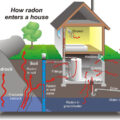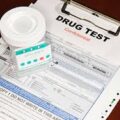What is Radon testing?
Radon testing is the only way to know whether your home has high levels of radon, a radioactive gas that can cause lung cancer over time. Here’s what you need to know about radon testing and reducing radon levels in your home. Radon testing is performed to detect the presence of radon in homes and buildings and is highly recommended. This gas is the second leading cause of lung cancer and a potential risk factor for leukemia and lymphoma. And since radon has no smell and is essentially invisible, the only way to know you have a problem is through radon testing.
If levels are abnormal, radon mitigation (a process to reduce gas concentrations or radon in water) can almost always solve the problem and eliminate your risk.
Where Is Radon Found?
Radon gas is produced by the normal breakdown of uranium in the soil. Although some regions of the United States have higher levels of radon, elevated levels have been found in homes in all 50 states and around the world. It is estimated that no less than one out of 15 American homes has elevated radon levels. In addition to soil, radon may be present in well water or items that are introduced into homes (such as granite countertops). Radon is present in small amounts in the air throughout the world. The average level of radon in outdoor air is 0.4 picoCuries per liters (pCi/L), and the average level in indoor air is 1.3 pCi/L.4
Types of Radon testing and Options
The EPA currently recommends testing all homes for radon below the third floor as well as all schools.4Testing is inexpensive and should only take a few minutes to perform.
There are both short-term and long-term radon tests available.
Short-term tests are good if you want an instant reading of the status of your home. They are also important as part of home inspections when buying or selling houses. Long-term tests are used to monitor radon levels over a period of time, as they can be low in some seasons and high in others.
Short-Term Tests
Short-term tests are the fastest way to detect elevated radon levels in your home. They are performed over a period of two to 90 days, with most retail kits designed for two- to four-day testing. Do-it-yourself kits are available at most hardware stores and can also be ordered online; they generally cost under $20. If you are purchasing a home, know that many home inspection agencies offer radon detection as part of their inspection service.
Long-Term Tests
Long-term tests are conducted over a period of more than 90 days. Radon levels fluctuate throughout the year and are highest during cold weather when heating is used and windows are shut.
These tests can give an average level of radon in your home year-round. Most often, long-term tests are used by those who have done radon mitigation (professional removal of the gas) and want to make sure that the interventions are working.
How to Perform a Radon Test
Carefully read and follow the manufacturer’s directions on your radon test kit. Some of the tests are very specific and may deliver tainted results if the timing is not correct or the test is not mailed back to the manufacturer’s lab within the allotted timeframe.
Most home radon tests have similar instructions:
- Place the test kit in the lowest area of living space in your home.
- Keep windows and doors closed (except for entering and leaving) for 12 hours prior to testing your home and throughout the duration of the test.
- Avoid placing the test kit in the kitchen, bathrooms, hallways, laundry room, and rooms that may be drafty.
- Place the kit at least 20 inches off the floor.
If your radon level is above 4 pCi/L, always be sure to repeat the test to confirm the results. If the average of the results remains above 4 pCi/L, it is strongly recommended that you contact a professional to perform radon mitigation.
Radon Mitigation
If your radon levels are elevated, it important to find a certified radon mitigation company in your area. You can do so by using the National Radon Safety Board (NRSB)’s online locator or by contacting your state radon or public health office.
If there is radon in the air: Mitigation is accomplished through ventilation, often by drilling holes in the floor slab of the house and suctioning gas under pressure from the underlying soil.
If there is radon above the slab: Mitigation requires sealing the house in an airtight envelope and suctioning gas out of ventilation systems, wall spaces, and crawlspaces.
If there is radon in the water: Mitigation involves use of activated charcoal filtration systems. There are also water aeration systems that can release radon into the air from open wells as a pollutant.
How long does a radon test take?
Testing for radon isn’t a complicated process, but it does take time. You can’t get overnight results from a test and also have true accuracy and cost-effectiveness. The best radon tests will take anywhere from 48 hours to multiple months, depending on the type of screening you choose and any state-specific requirements. Understanding how short term and long term radon tests differ in material, design, and use will help you choose the right tool for the job.
What to do If You Have High Radon Levels in your home
Take Action: Finding out that your home has high radon levels can be scary. But you can take steps to make your home safer. Here’s what you need to do:
- Contact your state radon office to get the name of a local expert who can give advice. You can fix some radon problems with simple low- or no-cost solutions. For bigger radon problems, you need a specialist — called a mitigation contractor — to fix your home.
- If needed, repair your home. Mitigation contractors can help by sealing cracks where radon gets in. They can also put in special pipes that help suck radon from under your home, so it goes outside instead of inside. Radon in your home can be a serious health risk — but it’s a problem you can fix. If you haven’t tested your home for radon, get a test kit now. SEE: 10 Radon Poisoning Signs and Symptoms You Should Know





